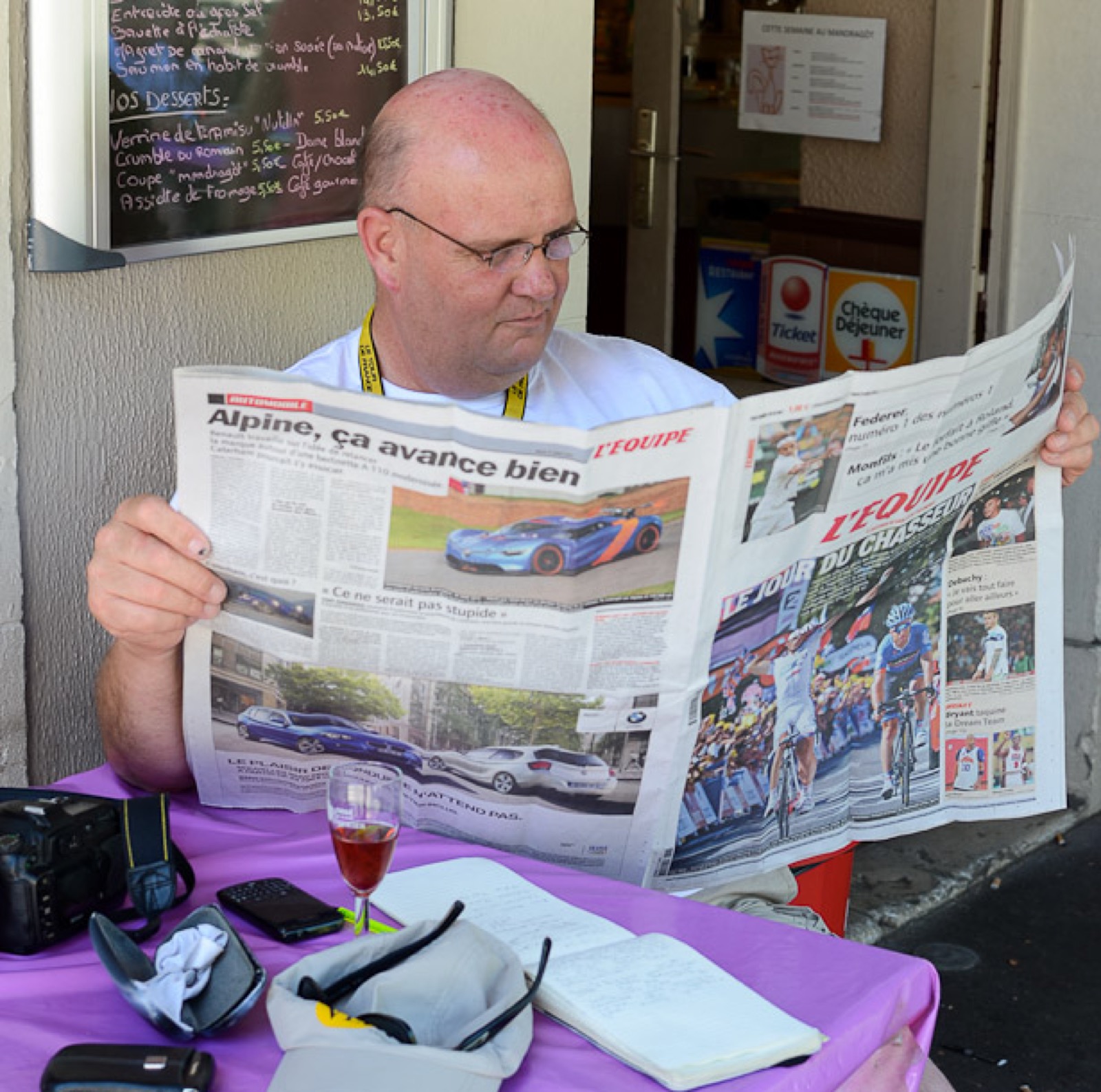To appreciate how big a deal it was for Luis Alberto (Lucho) Herrera to win the 1987 Vuelta, it’s best to read the passage in Lucy Fallon and Adrian Bell’s book, ‘Viva la Vuelta’ where they talk about the closing stage into Madrid.
‘Back home in Colombia, the radio commentary and TV coverage had the population mesmerised. With the entire country at a standstill, it made sense to declare the final day of the Vuelta a national holiday.
The streets of Bogota were deserted until Lucho crossed the final line. Then the nation exploded in joy, the first heart attack victim was registered, and the partying began in earnest.’
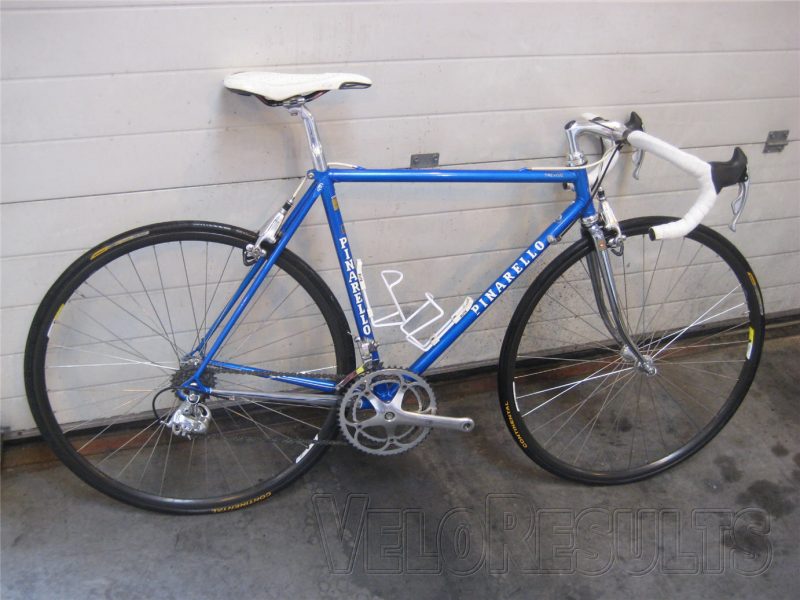
The Pinarello of Lucho Herrera made such an impression on Scot John Laporte that he went out and bought one just like it.
Apart from the tyres and saddle, it’s pretty much how it was when it first saw the light of day; John bought his just as the first of Campagnolo’s ‘ergo power’ combined brake/gear levers arrived in 1992.
The frame, a ‘Treviso’ model came from south coast of England importer Dauphin Sport, which used to be run by ex-pro Tony Mills.
As befits the archetypal Italian frame, the tubing was double butted Columbus SL; in these days of sub-one kilogram framesets, a set of SL weighed in at around two kilos.
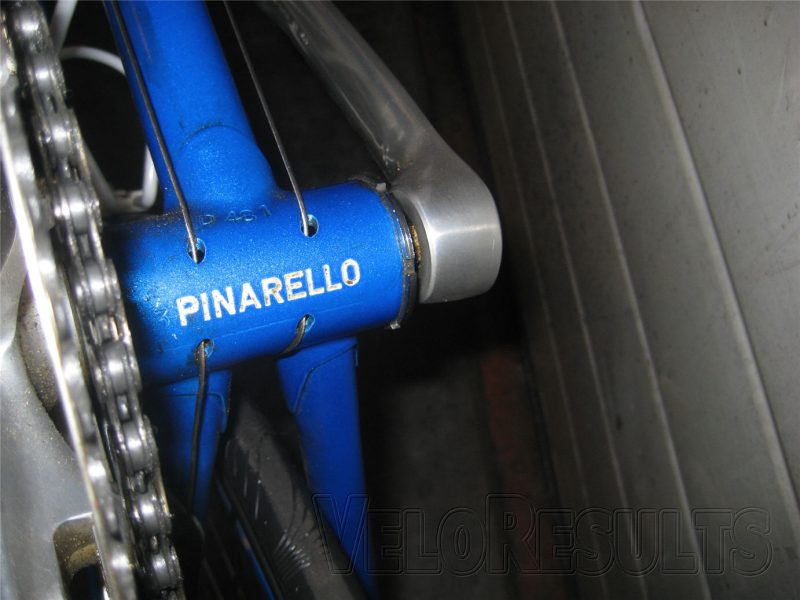
The bottom bracket was investment cast, engraved with the Pinarello logo and had ‘trick’ cable routing.
Lugs were reminiscent of the famous Prugnat ‘short points’ and featured cut-outs; these certainly didn’t save much weight but were pleasing to the eye and enabled a better flow of solder through the lug at brazing stage.
Campagnolo supplied their famous forged ‘short’ drop outs which were chromed for durability — continual clamping of quick releases in the world of the pros means that paint work to drop outs doesn’t last long.
Front forks were all chrome with a semi-sloping crown engraved ‘GPT’ Giovanni Pinarello Treviso — the north Italian city and province which is home to Pinarello.
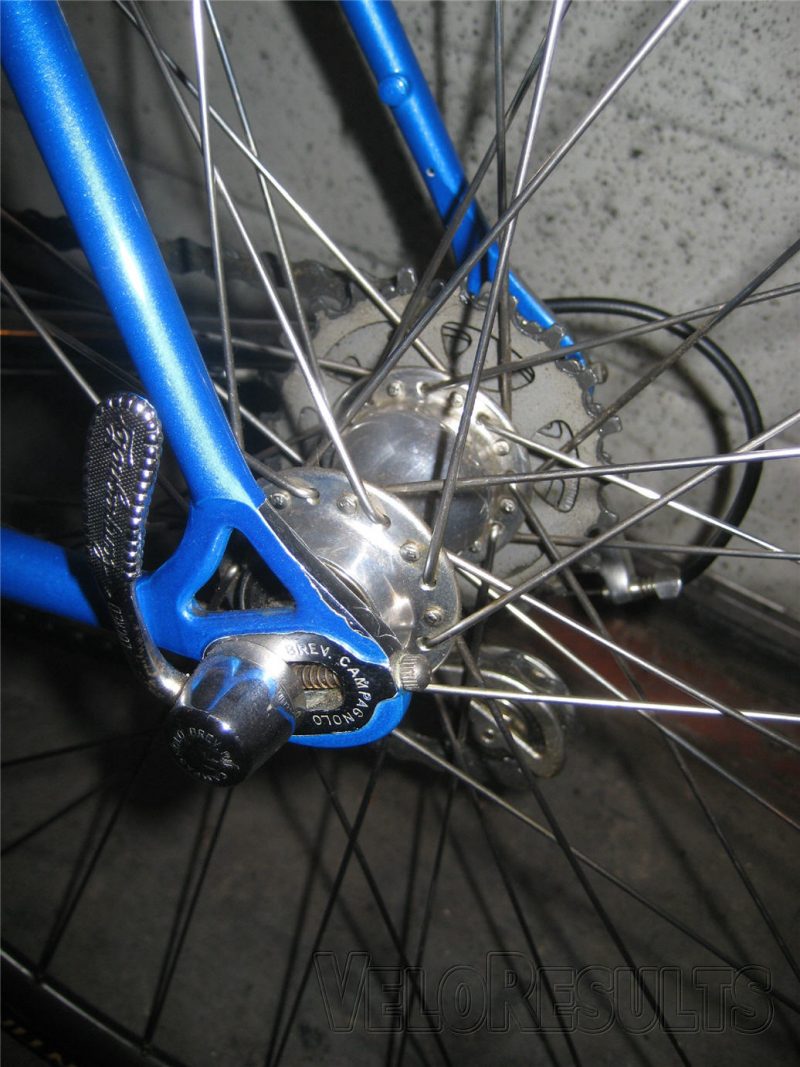
The seat stays were capped with solid top eyes also engraved with the ‘GPT’ logo and featured a neat ‘pip’ just above the gear hanger on which to hang the chain whilst the bike was in transit.
The drive train side chainstay was chromed for durability; a chain bouncing on rough surfaces would soon devastate chainstay paint.
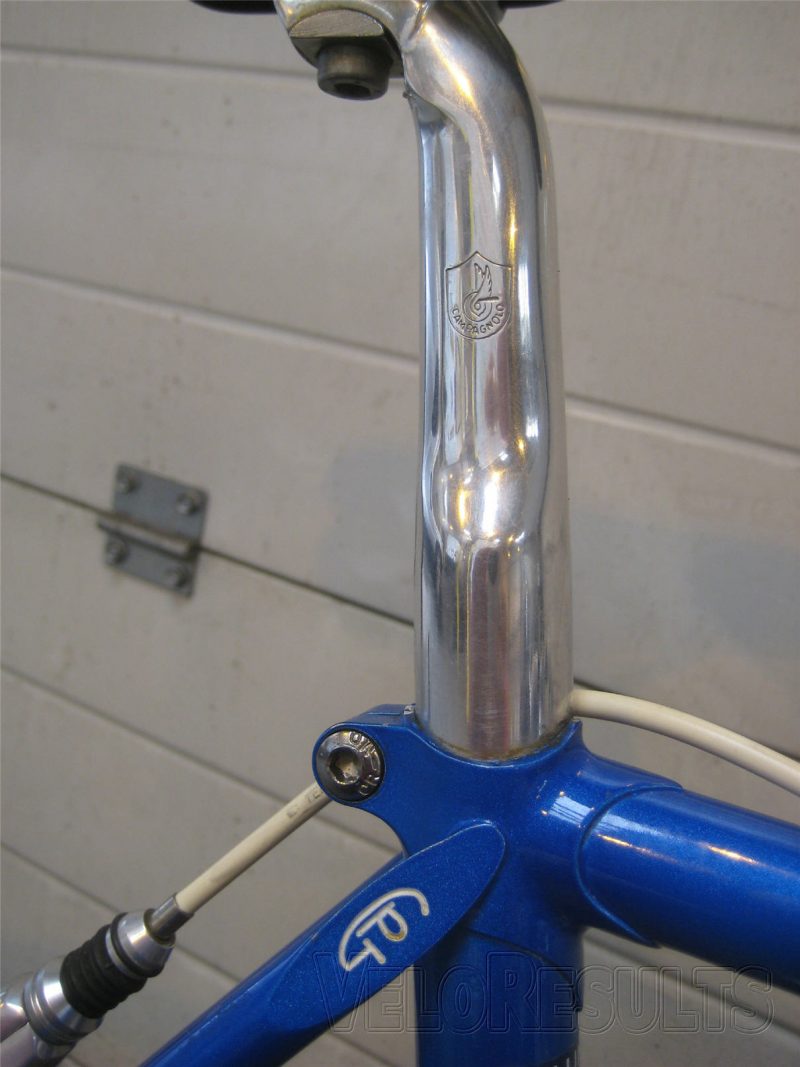
The seat pillar was the first element of the Campagnolo C-Record groupset, adjustable by a single easily accessible bolt, unlike the original ‘Campag’ seat pillar which required a special cranked spanner to adjust.
Campag’s ultra neat Allen key seat bolt nestled flush into the seat cluster to secure the pillar.
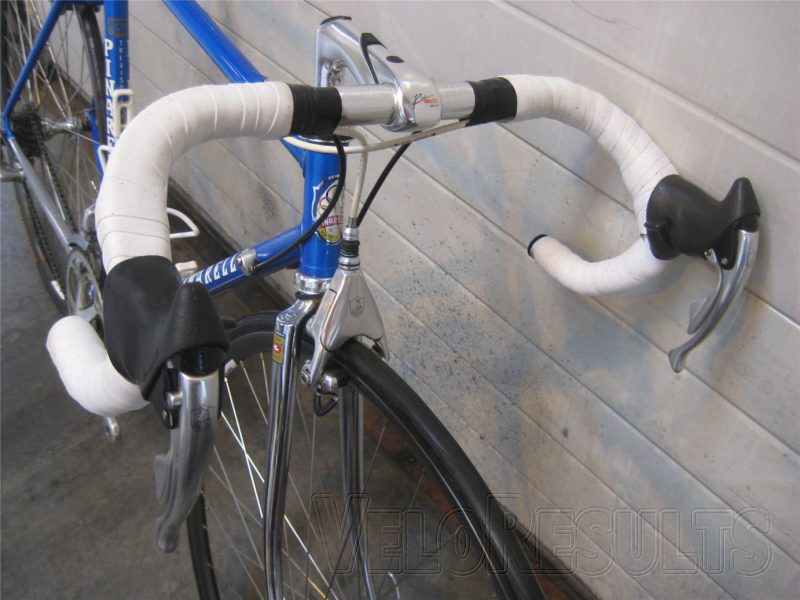
Up front, the: Sachs-branded (which was actually made by Modolo – thanks to Al Hamilton for spotting that) ‘bars and stem were chosen because of their futuristic — for the time — design; the Campag ergo power shifters look clunky now but were cutting edge back then.
Whilst Shimano were first to incorporate braking and shifting in the same levers, the Italian firm were the first to incorporate concealed gear cable routing.
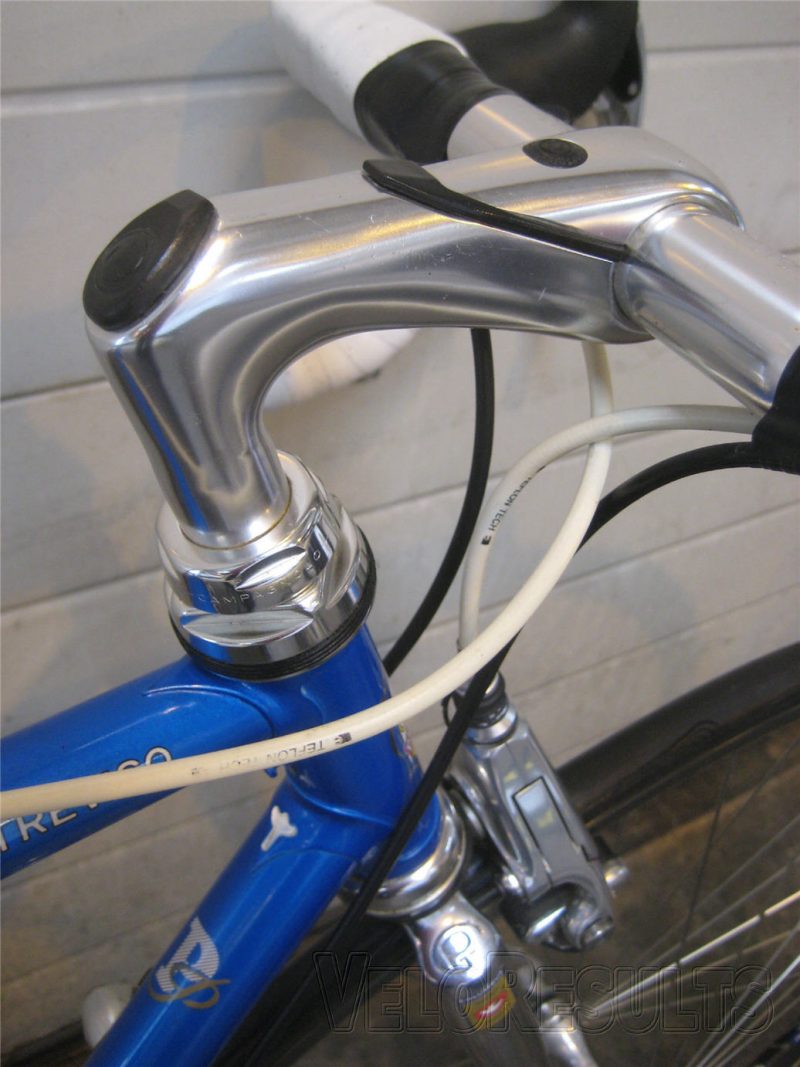
Campag’s C-Record alloy headset did the steering but is perhaps not their most elegant design.
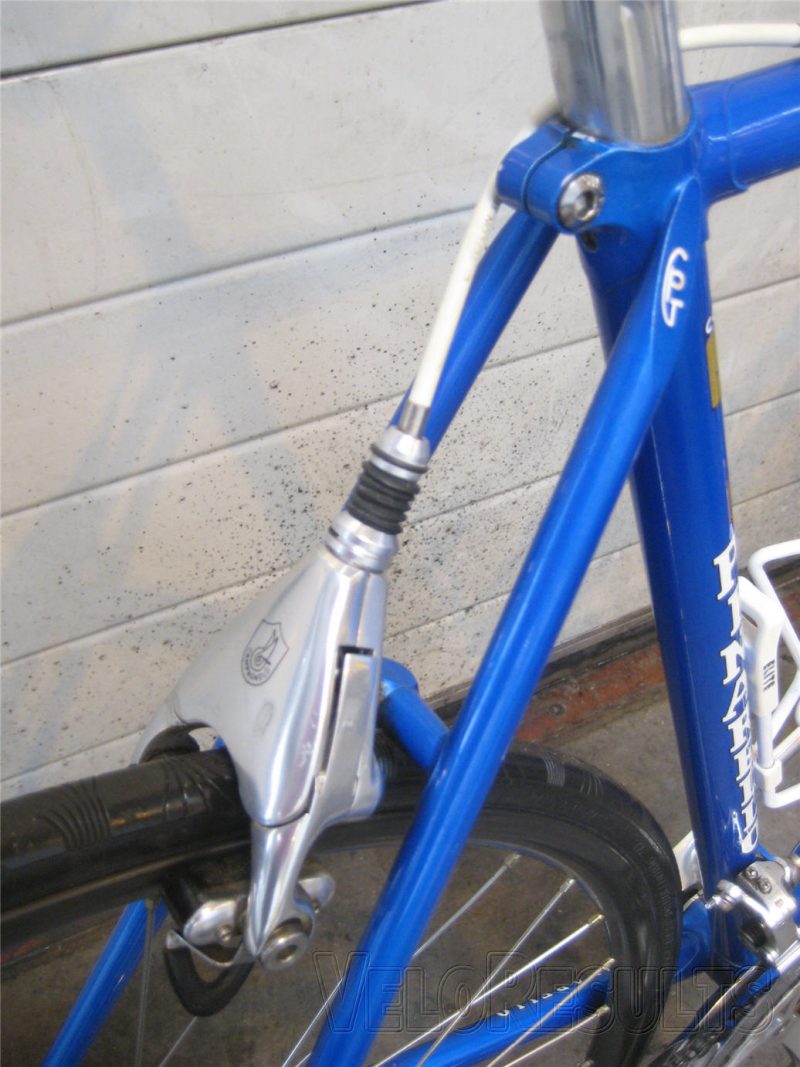
The same can’t be said of the sleek ‘Delta’ brakes, the centre pulling internals of which resembled a Swiss watch; but they were just too delicate for the rough and tumble world of professional cycling and Campag discontinued them in 1993.
The rear brake cable was concealed in the top tube – the gear cables ran through the bottom bracket – and the seat stay brake bridge was neatly reinforced.
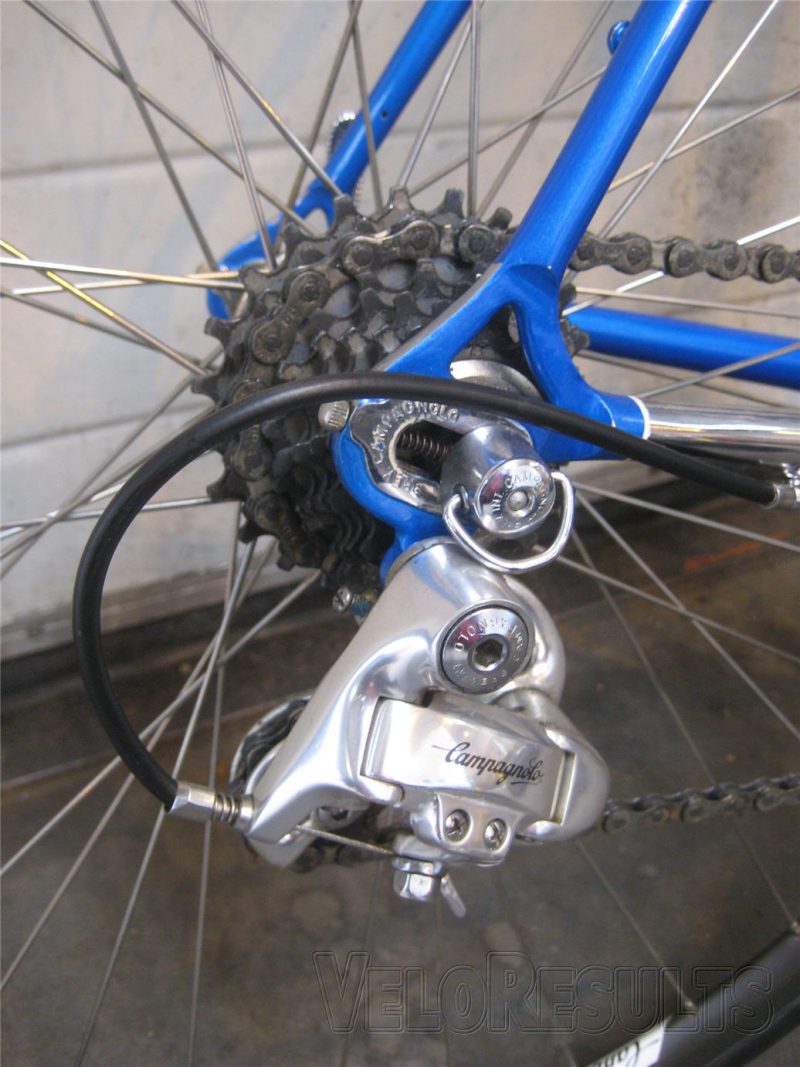
Eight speeds was the configuration of the day; shifting was much less subtle than it is these days — computer designed ramps, pins and super flexible chains with eleven speed transmission were still a way off.
But if you’d grown up with five speeds and a fear of shifting due to the horrific events that could take place if you muffed the change — eight speed ergo was cool.
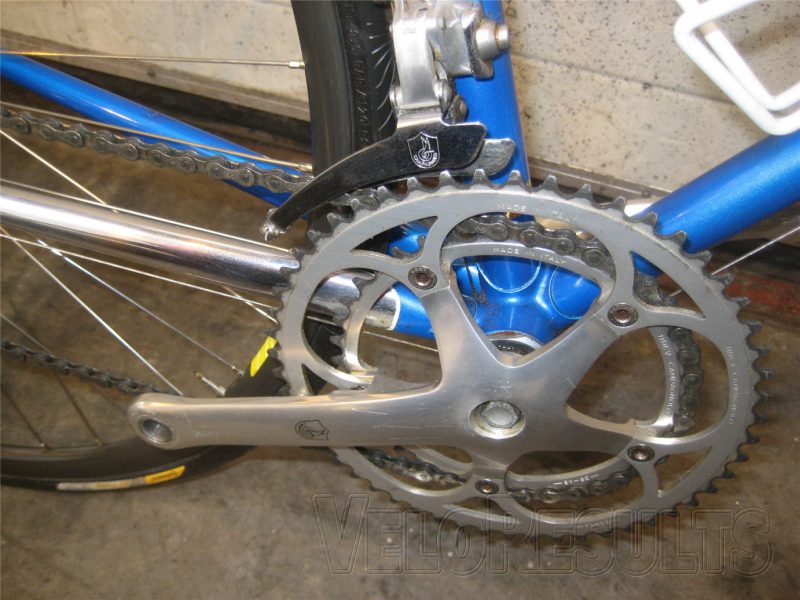
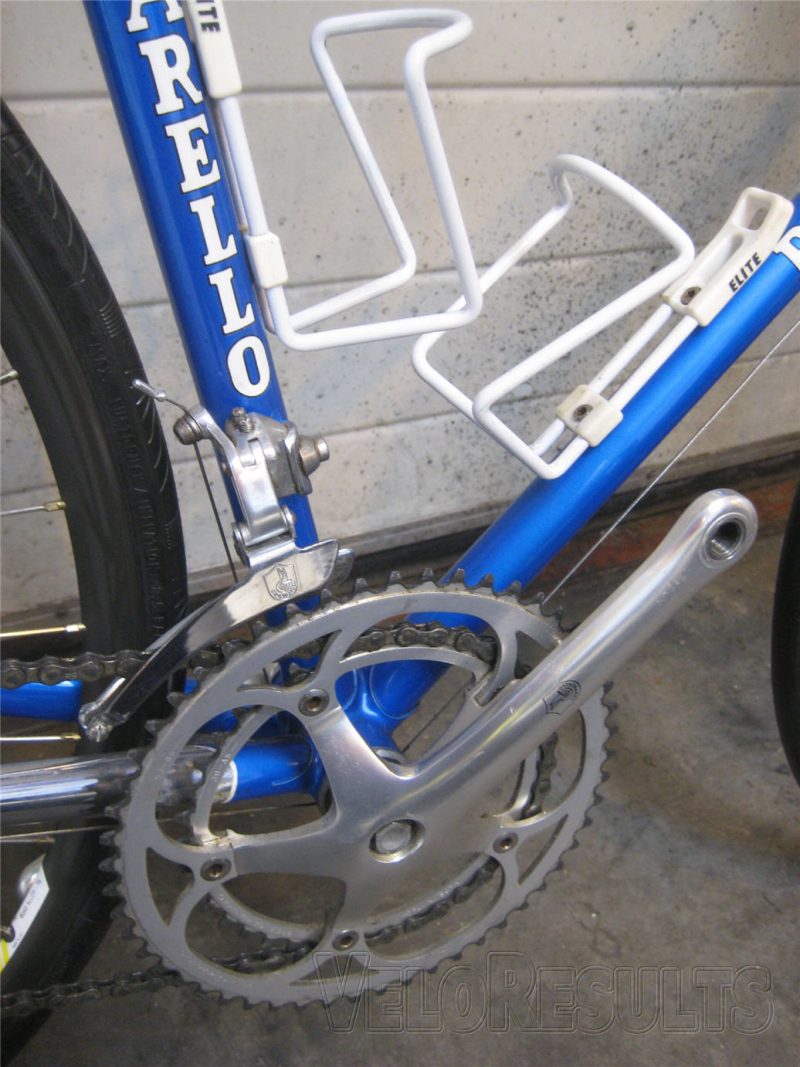
The C-Record chainset had the fifth chainring fixing bolt secured into the back of the crank arm — a feature that Campag have retained ever since, rings were 39 x 53.
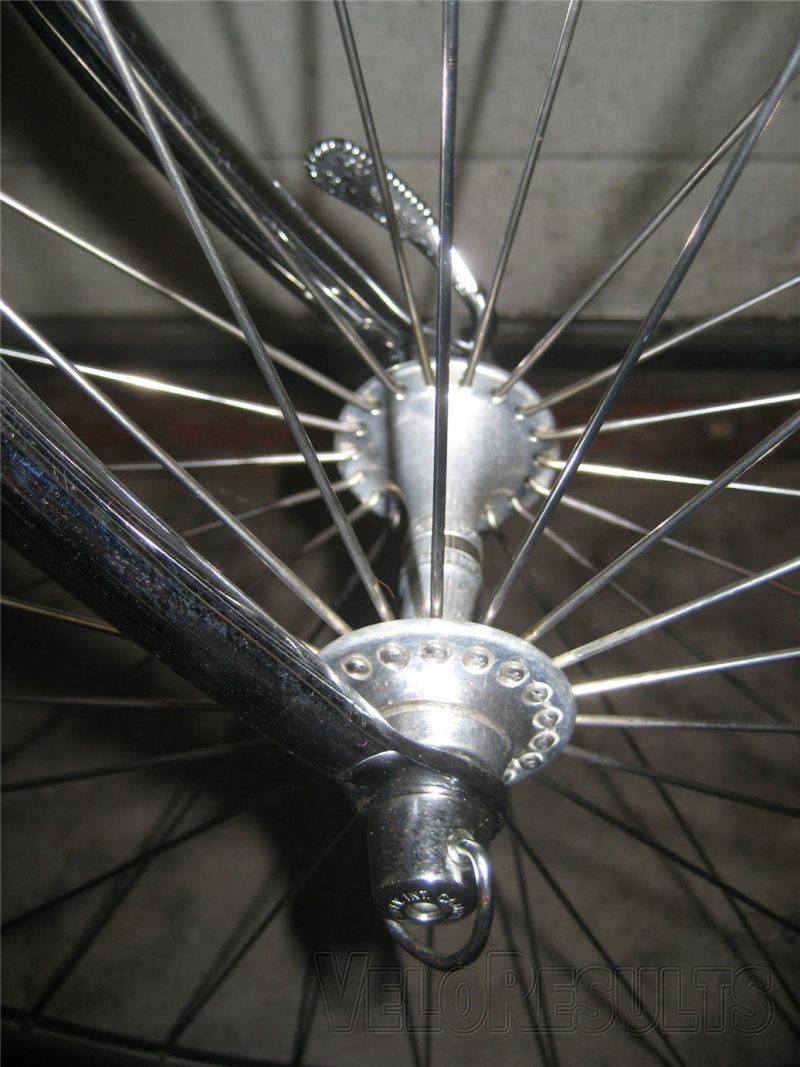
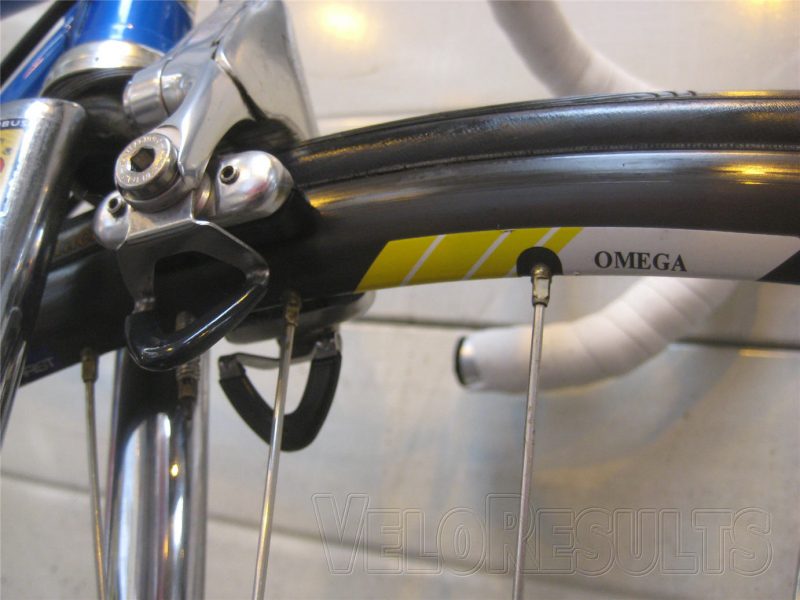
Rims and hubs came from Vicenza — the city which is home to Campagnolo — Record-C with grey Omega rims, spokes in stainless steel; laced by former GB mechanic Sandy Gilchrist, with the front radial.
And whilst John has kept the bike ‘period’ as much as possible, tyres do wear out and the Pinarello now runs on sticky Continental rubber.
But despite his love of Lucho, steel tubes and historic Campag, exotic carbon is tempting him; and the Pinarello just might go to a good home – in the right circumstances [email the Editor if you’re interested].
Despite my love of the history of our sport, I don’t go in for nostalgia about old bicycles — but this is one nice machine.


